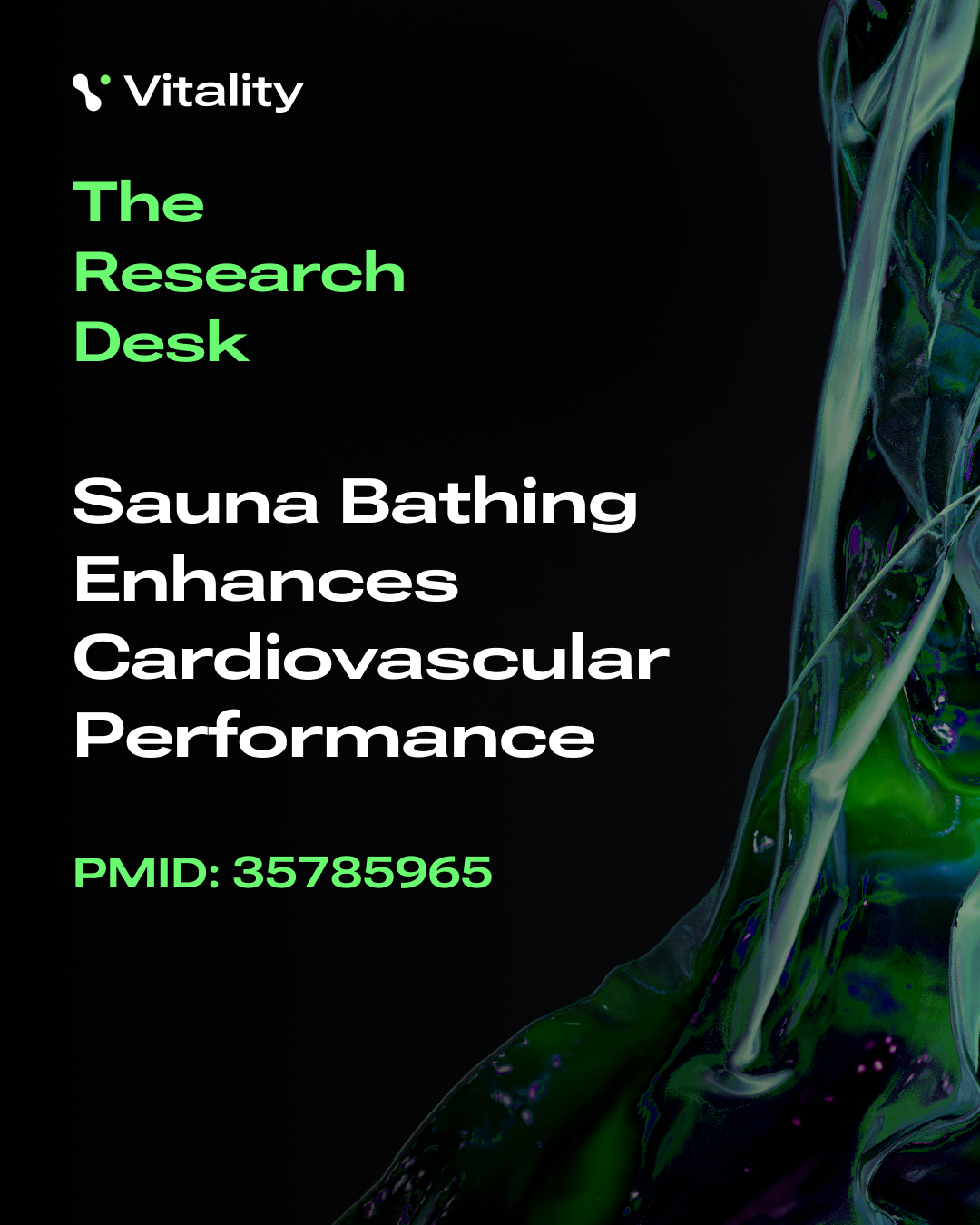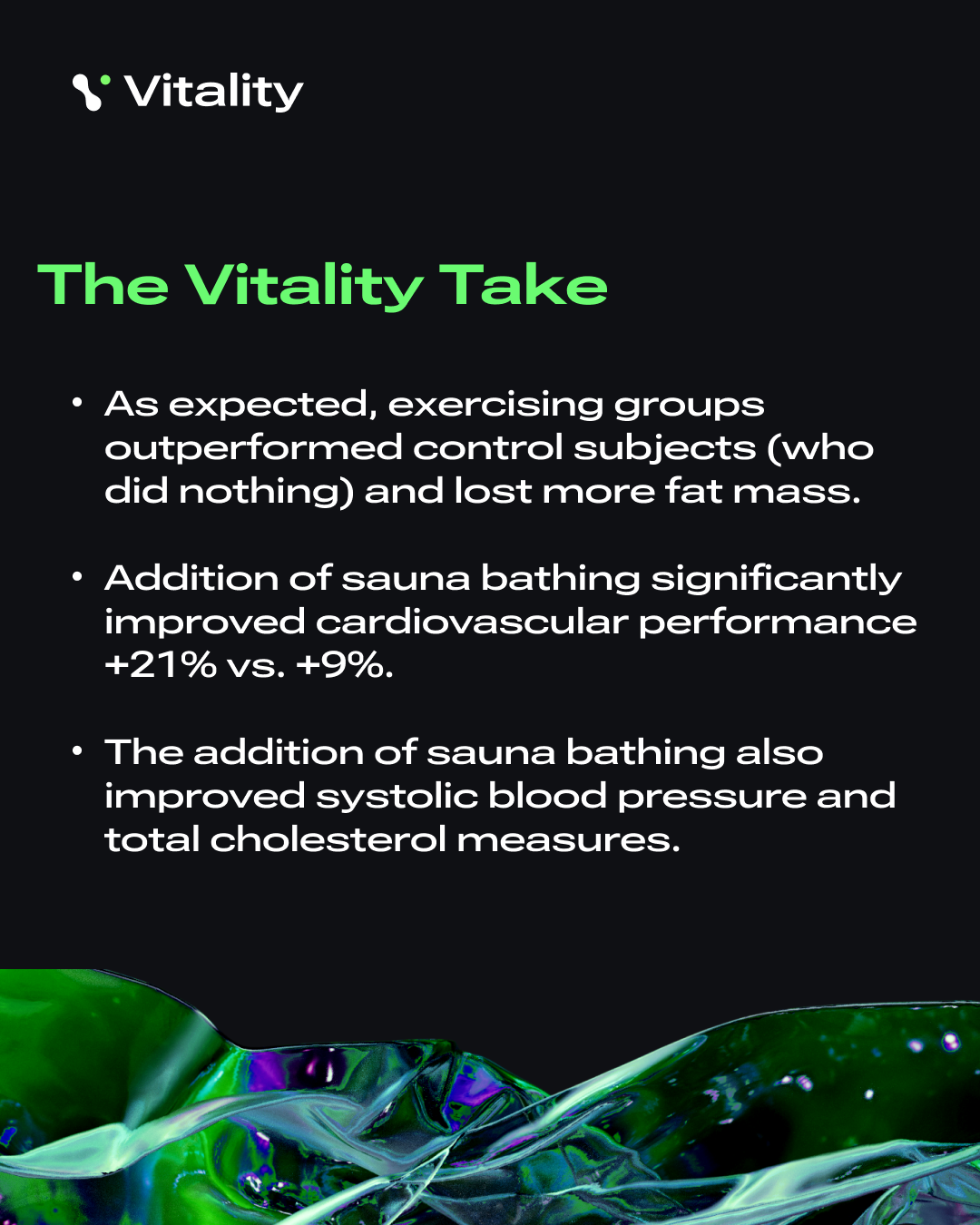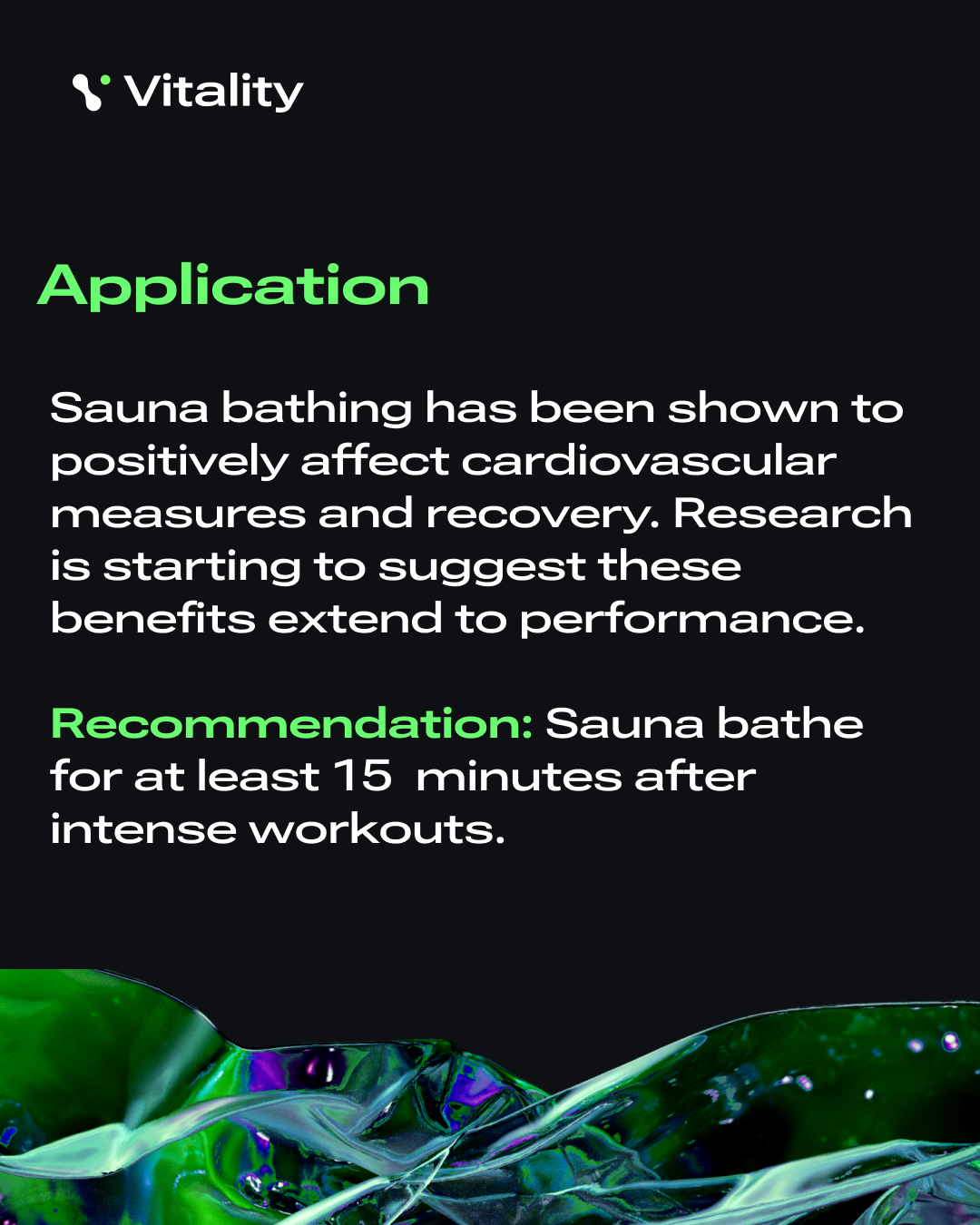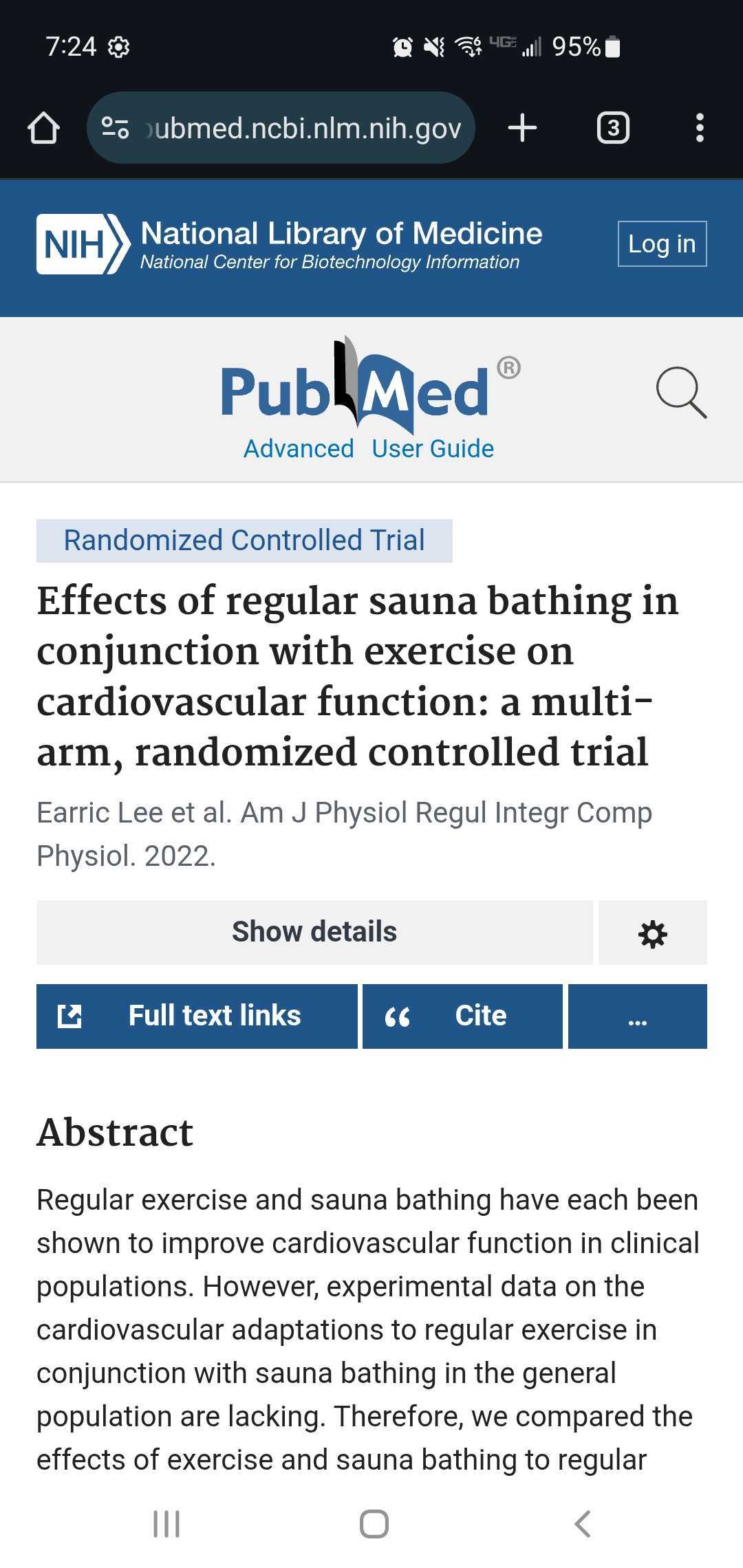
Sauna culture has been around for centuries. But over the past couple of years, its popularity has seen some substantial growth with little sign of slowing down. Growing popularity means growing scrutiny. More scrutiny leads to more studies with deeper dives into past research.
This growing popularity piqued our interest. Today, The Research Desk is taking a closer look at sauna bathing and its potential performance and health benefits.





PMID: 35785965
This study examined the effects of 50 minutes of concurrent training alone vs. the same concurrent training and 15 minutes of sauna bathing 3x per week over 8 weeks.
At the end of the 8 weeks, the exercise group had better cardiovascular performance and lost more weight when compared to the control group, as expected.
When the exercise-only and exercise + sauna groups were compared, the sauna group really stood out. Not only did the two groups display similar losses in fat mass, but the sauna group outperformed the exercise-only group in cardiovascular performance and significantly decreased blood pressure and total cholesterol.
While this study was performed in sedentary people. Similar effects have been seen in athletic populations. Specifically, a 2007 study examining the effects of sauna bathing on run performance in competitive runners saw a significant increase in time to exhaustion.
Researchers suggest that the improvements seen in this study are a result of enhanced improvement in cardiovascular function. Other studies have pointed to other physiological changes, such as increased plasma and total blood volume. These results may be driven by increased physiological strain placed on the body during sauna bathing.
It is important to note that this was a traditional sauna, not an infrared sauna, meaning it had heat (up to 80°C) AND humidity (up to 20%). While they do incorporate heat, Infrared saunas do not incorporate humidity in their intervention. This is a very important detail when deciphering between the two and serves as a hurdle when trying to directly tie the benefits of one style of sauna to another. While infrared saunas have been shown to elicit beneficial effects, using traditional sauna data and mechanisms of action to directly support these effects is a misstep.
Sauna bathing was shown to directly benefit measures of cardiovascular performance and health and endurance beyond the positive effects of exercise.
When combined with research examining the positive effects on athletic populations, the case for sauna bathing, especially post exercise, is strengthening.
Recommendation: Sauna bathe for at least 15 minutes after intense workouts.
Explore the Vitality Encyclopedia to learn more about these topics.